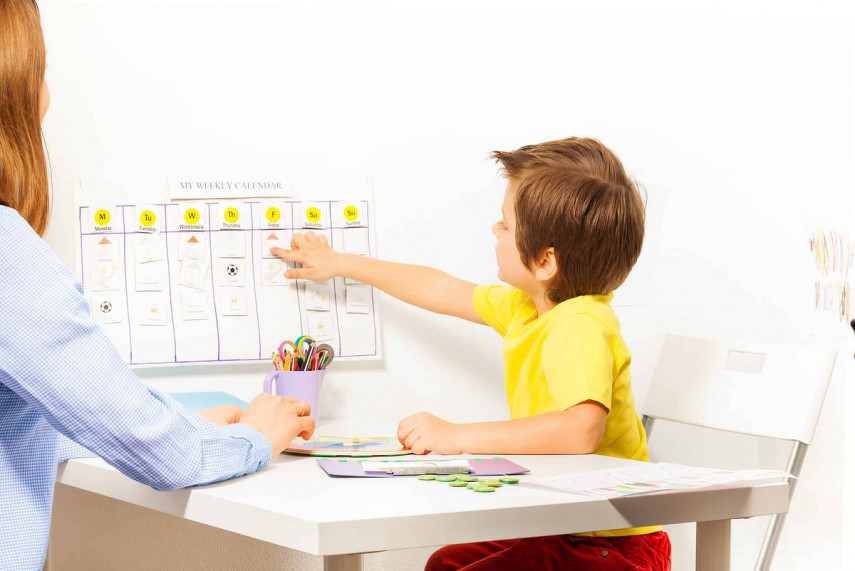Creating A Schedule For A Child With Autism

Changes in routines can be especially difficult for children and adults with autism other disabilities. During these challenging times where we find our day-to-day lives have drastically changed, it can be very helpful to establish a consistent routine. Creating a daily schedule can be very helpful for children with autism as it promotes predictability, clarifies understanding, informs of upcoming events and changes in routines and supports transitions.
Check out our Parent Training video (Session 3) for information of creating a daily schedule, additional tools and videos.
Here we've including some tips on how to individualize a schedule for children. These strategies are suited for children who may be new to or less familiar with visual schedules, have some cooperation with task demands, and engage in no or only low risk challenging behaviour.
Setting Up a Visual Schedule
- Set up the schedule in visual format. This can be picture symbols or text, depending on the child. Ensure the schedule is portable to minimize transitions to the schedule. Consider a white board or laminated strip with pictures.
- Consider creating schedules in blocks (e.g. morning and afternoon or hourly schedules).
- Vary the activities within each block (e.g. leisure, sensory, gross motor and work-related tasks like academics or chores).
- Be sure to provide frequent access to preferred activities and depict these activities visually so your child knows when to expect them (this can also reduce behaviour related to wanting an activity/item and needing to wait).
- Plan less preferred activities before highly preferred activities. This will promote your child’s cooperation with the less preferred activity.
- Provide advanced warning when a preferred activity is coming to an end. For example, “In 5 minutes we’re going be done with ___.”
- More neutral activities should be planned following highly preferred activities (rather than less preferred) to minimize challenging behaviours related to the transition.
- Preferred activity > Neutral activity > demand (less preferred) activity
- Eg: iPad > Sensory activity > academic work > iPad (or other highly preferred activity)
- Repeat the order but with different activities - If your child engages in behaviour when a more preferred activity ends, refer them to the visual schedule and show them when they will have access to the preferred activity again. Redirect them to the next activity. If your child engages in challenging behaviour with transitions from preferred activities, you may need additional strategies.
Implementing a Visual Schedule
- Show your child the schedule and point to the first activity. Label the activity (“It’s time for ___”). If possible, have your child point to the picture of the activity. Prompt them to point if possible. If your child resists pointing, avoid placing that expectation.
- Then transition to that activity. Your child may transition independently or may need assistance. Help them as much as needed.
- Engage in the activity (this may be with or without support depending on the activity).
- For open-ended activities, provide your child a verbal warning when the activity is almost done.
- Once the time for the activity is up, prompt your child to tidy up. Provide assistance as needed.
- Show them the visual schedule. Remove the activity that is now finished by taking off the picture or erasing it from the whiteboard. Have you child help or do this independently if possible.
- Point and label the next activity. Over time, as your child becomes more familiar with the pictures and the activities they represent, they may be able to label and/or point and transition more independently.
Children with autism learn through repetition. A consistent schedule displayed visually can help promote independence and reduce challenging behaviour.